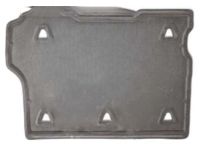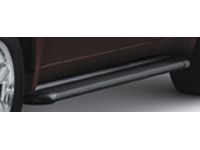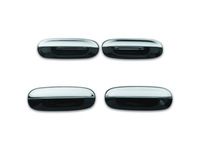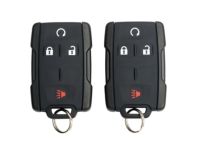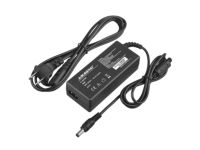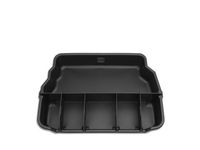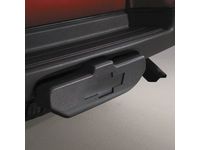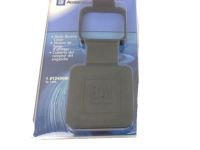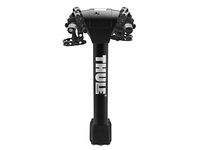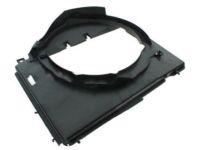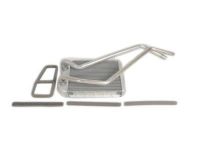Why choose GMPartsGiant
- Large Inventory
The best site to buy Chevrolet Trailblazer genuine parts for years has been GMPartsGiant.com. We're the best online parts and accessory store for your Chevrolet Trailblazer. GMPartsGiant.com offers a large parts and accessory inventory to cover all your vehicle's repairs. Feel free to browse through our genuine Chevrolet Trailblazer parts and accessory catalog to find all your vehicle's needs.
- Fast Shipping Times
All of our Chevrolet Trailblazer auto parts and accessories are expedited directly from verified dealers and backed by the manufacturer's warranty. Our experienced team ensures the orders are packed to provide quick transit times. The majority of the orders are shipped out within a couple of business days to get the parts out to you as fast as possible.
- Low Prices
Our low prices say it all. You can rest assured that you will always receive unbeatable prices on OEM Chevrolet Trailblazer parts. Our giant inventory is beyond compare and has everything you need at an extraordinary value not found anywhere else. Whether you're restoring an old vehicle or upgrading the performance of your vehicle you can count on the quality of our products without hurting your bank account.
Popular Genuine Chevrolet Trailblazer Parts
- Engine Parts View More >
- Front Suspension, Steering Parts View More >
- Fuel System, Exhaust, Emission System Parts View More >
- Brakes Parts View More >
- Transmission - Automatic Parts View More >
- Frames, Springs, Shocks, Bumpers Parts View More >
- Cooling System, Grille, Oil System Parts View More >
- Front Axle, Front Suspension, Steering Parts View More >
Shop Genuine Chevrolet Trailblazer Parts with GMPartsGiant.com
The Chevrolet Trailblazer, a mid-size SUV and subcompact crossover SUV, is a prominent offering from General Motors, produced under the Chevrolet brand since 2001 and 2020 respectively. The Trailblazer nameplate initially debuted in the North American market from 2001 to 2008 and saw a newly redesigned version for Asia and Brazil in 2011. The crossover version was introduced in 2021. The first-generation model sported an all-aluminum 4.2L Atlas LL8 inline-six engine delivering 273 hp and 277 lb-ft of torque, with an optional aluminum small-block 5.3L V8 engine providing 302 hp and 330 lb-ft of torque. In 2012, the model switched to a standard Duramax 2.5L engine. The latest iteration comes with a 1.2L or 1.3L 3-cylinder turbocharged gasoline engine. The 2001 model's transmission was a 4-speed 4L60E automatic, shifting to a 6-speed manual or automatic in 2011. The latest crossover SUV features a 9-speed GM Hydra-Matic 9T65 automatic transmission for the all-wheel-drive variant and a CVT transmission for the front-wheel-drive version. The Trailblazer has evolved over its generations, initially based on the GTM360 truck platform, transitioning to a truck frame in the second generation, and culminating in a compact crossover with a reduced wheelbase in the latest version. The Chevrolet Trailblazer has witnessed a significant surge in sales in the US market in 2021, testament to its compelling blend of practicality, performance, and feature-rich offerings.
Chevrolet Trailblazer, over time, tends to exhibit certain mechanical problems such as engine issues and transmission failure. Engine-related problems can include difficulty starting the vehicle, intermittent stalling, rough idling, misfires or backfires, the Check Engine Light illuminating, poor fuel economy, and reduced power or sluggish acceleration. These symptoms often suggest issues with components like the spark plug, crankshaft, intake and exhaust valves, or oxygen sensor. Transmission failure, another common issue with the Trailblazer, often surfaces after approximately 60,000 miles, with most owners resorting to transmission replacement or rebuilding as the primary solution. Additionally, the vehicle's wheels are crucial for proper functioning. The wheel cover not only shields the wheel hub and fasteners from dirt but also adds to the car's aesthetics. Regular inspections and maintenance can prevent wheel-related problems. Finally, the drive belt, a safety component that protects the driver during collisions or sudden braking, deserves equal attention to ensure a safe and smooth driving experience.
For Chevrolet owners with dreams of keeping their vehicles running in prime condition, choosing OEM parts is a smart decision. Meticulously crafted, these parts follow strict factory specifications and are manufactured in top-notch facilities with advanced technologies. Furthermore, they undergo rigorous testing to ensure durability and safety, making them a reliable choice for Chevrolet owners. If you need Chevrolet Trailblazer parts, including Brakes, Rear Axle, Propeller Shaft, Wheels, Tires, Interior Trim, Front Seat Trim, Seat Belts, select one from our full inventory of genuine Chevrolet Trailblazer parts, such as Front End Sheet Metal, Heater, Body Moldings, Sheet Metal, Rear Compartment Hardware, Roof Hardware. We offer all parts, like Rear Body Structure, Moldings & Trim, Cargo Stowage, Transfer Case at great budget friendly prices. Additionally, all our OEM parts are backed by a manufacturer's warranty and delivered quickly.
Chevrolet Trailblazer Parts Questions & Answers
- Q: How do I remove the Fan Clutch,Fan Shroud and Radiator fan on Chevrolet Trailblazer?A: To remove the intake air baffle, start by removing the bolts and push pins that attach it to the radiator support. Disconnect the transmission cooler lines at the engine bracket and fan shroud, and also disconnect the electro-viscous clutch electrical connector from the shroud. Remove the upper radiator hose from the radiator, being prepared for coolant spillage. Use a large wrench to remove the fan clutch retaining nut and detach the fan clutch assembly from the engine. If the water pump pulley slips on the belt, remove the drivebelts and use a strap wrench to hold the pulley. Unclip the shroud from the radiator side panels and tilt the condenser and radiator forward, with the help of someone if needed. Lift the radiator fan and shroud as one unit, while holding the condenser and radiator in the forward position. If necessary, unbolt the fan from the clutch. When installing, tighten the fan hub nut to the appropriate torque specifications. Finally, check the coolant and add as necessary to bring it to the appropriate level.
- Q: How do you remove the Heater Core on Chevrolet Trailblazer?A: To remove the air conditioning system, start by discharging it and disconnecting the battery cable at the negative terminal. Then, drain the cooling system and remove the heater hoses and air conditioning lines from the fittings at the firewall, making sure to plug the lines to prevent coolant spillage and contamination. Next, remove the instrument panel assembly and the instrument panel carrier and heater/air conditioning assembly. Separate the HVAC module from the instrument panel carrier and then remove the screws to separate the HVAC module halves and carefully remove the heater core. For installation, simply reverse the removal steps and refill the cooling system. Finally, have the air conditioning system charged by a professional and check for proper operation by starting the engine.
- Q: How do I remove and install the front and rear heater controls on Chevrolet Trailblazer?A: To remove and install the front A/C switch, start by disconnecting the cable from the negative terminal of the battery. Then, remove the console and the accessory trim plate. Next, remove the control assembly retaining screws and depress the tabs to pull the unit from the dash. Use a small screwdriver to release the clips and disconnect the electrical connections and control cables if necessary.
- Q: How to remove the Radiator on Chevrolet Trailblazer?A: To remove the air conditioning system, start by discharging it if your model does not have an auxiliary air conditioning system. Disconnect the cable from the negative terminal of the battery and drain the cooling system. Remove the fan shroud and electro-viscous clutch, then raise the vehicle and support it securely on jackstands. Remove the lower radiator hose and the radiator support shield if equipped. Detach the transmission cooler lines from the radiator by unsnapping the plastic collar from the quick-connect fitting, removing the retaining clip, and pulling out the lines. Plug the ends of the lines to prevent fluid leakage. Lower the vehicle and remove the radiator support brace and coolant reservoir line. Disconnect the radiator side panels and remove the radiator. Before installing the radiator, replace any damaged hoses and hose clamps. To install the radiator, ensure it seats properly in the lower saddles and that the upper brackets are secure. Install the transmission cooler line retaining clips onto the quick-connect fitting and snap the cooler lines into place. Reinstall the plastic collars on the quick-connect fittings. Refill the cooling system and check the engine oil and automatic transmission fluid levels. If your model does not have a rear air conditioning system, have it charged by the shop that discharged it.



















































